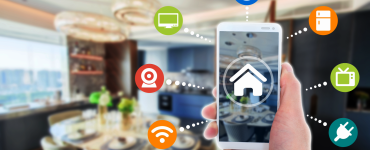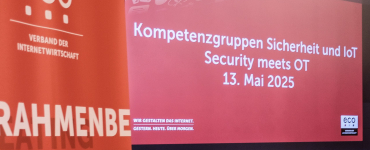On 12 September 2023, the eco Networks and IoT Competence Groups will come together at the Huawei OpenLab in Ismaning to discuss groundbreaking key topics of current and future smart home applications under the motto of “Digital Infrastructure as the Foundation of Smart Home Applications”. In the run-up to the event, we’ve had the opportunity to talk to Lorenz Grehlich, Head of Planning and Implementation at M-net, about the crucial role of digital infrastructures and high-performance networks for smart home use cases, as well as current challenges and developments in the smart home sector.
You will be a speaker at the eco event “Digital Infrastructure as the Foundation of Smart Home Applications”, covering the topic of “Smart Home from a Carrier Perspective”. What insights can participants expect from your presentation?
Lorenz Grehlich: As a carrier, we have to deal with the inadequacies of the technology, which has had an unfavourable effect on connectivity in the smart home sector, especially with the introduction of IPv6. I will shed light on where these problems come from and how they are being addressed today – along with all the consequences.
How important are network expansion and high-performance networks for the development and dissemination of new smart home applications and technologies?
Lorenz Grehlich: In the past, smart home was only used to control a few lamps, and availability wasn’t very important. Today, however, all sorts of sensors and detection systems are interconnected. Doors open automatically when approached, facial recognition activates corresponding scenarios, and garden irrigation is fully automated and sensor-controlled. Accessibility has become much more important, as these systems and applications need to be constantly connected to the cloud of the smart home provider. High-performance networks in terms of bandwidth are currently being expanded; the next development step is to provide a network that is as latency-free as possible. The communication with the cloud and the interaction between the systems must be able to take place almost in real time. These are the current challenges we are working on.
Which technologies are currently at the forefront to provide high-speed Internet as the foundation for smart home applications, and what future developments can be expected?
Lorenz Grehlich: The FTTH deployment, which namely brings the optical fibre into the home, is an important prerequisite for a fast and reliable network as the foundation for IoT applications. The further development is extending the fibre optic network within the home to individual rooms. This is currently being driven forward by a number of equipment suppliers under the term of FTTR (Fibre to the Room). When combined with future transmission methods such as Li-Fi, this can become a new realm of future connectivity, which could also be used for smart home devices in particular.
Thank you for the interview!




